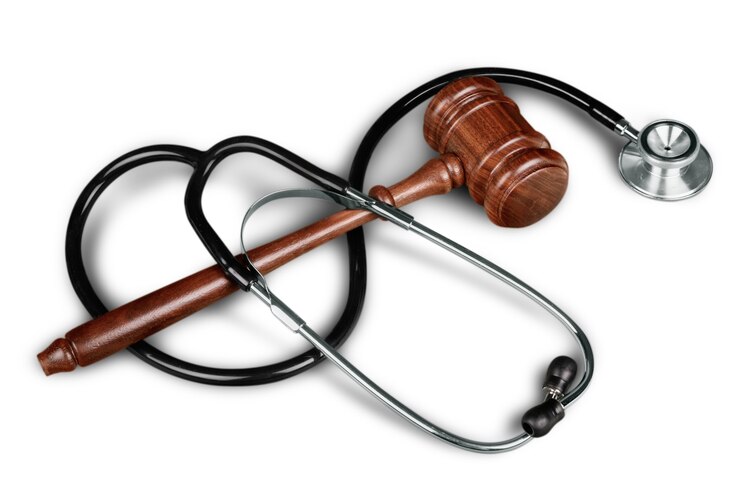
Table Of Contents
What You Need To Know About Medical Malpractice: Types and Potential Damages
Medical malpractice happens when a doctor or health care provider provides a substandard treatment that might cause death, injury, or harm to a patient. Intentionally or negligently not taking the right action, or failing to provide the right treatment.
It could either be in health aftercare, treatment, management, medication dosage, or diagnosis. With medical malpractice law, patients can get compensation for any injury or harm that occurs due to substandard treatment.
This loss causes serious harm to the patients who are going through this phase. For example, if any child is suffering due to a birth injury. No birth injury claims can get back the pain and suffering of their parents.
Read on to find out the types of medical malpractices and their potential damages.
Types of Medical Malpractice

several scenarios could result in a medical malpractice claim. It can include a doctor not telling a patient that the prescribed drug could result in heart failure or leaving sponges in a patient’s stomach after an operation.
Most medical malpractice claims can fall into any of the following categories below:
1. Birth injuries
The birth of an infant in the world is a joy and a memorable experience for many people. But, when the delivery or labor staff are negligent in their duties which results in birth injuries, the following experiences could be pretty devastating for the parents involved.
Expectant parents make plans for things that surround the birth of a new baby, but they don’t usually plan for birth injury due to medical negligence. In some cases, birth injuries could even lead to either the baby’s or the mother’s death. When such happens, it would be best to speak with law firms for birth injury claims.
Birth injury malpractice could be in any of the following forms below
- Non-provision of adequate prenatal care.
- Not diagnosing serious complications.
- Not correctly using assistive devices and causing brachial plexus or cerebral palsy injuries.
- Anesthesia errors
- Failure to monitor mother and child during labor
- Failure to perform a C-section during an emergency.
- Performing needless C-sections.
2. Not warning patients of known risks
A doctor is duty-bound to tell patients of the known risks of treatment or procedure. This Is what is called the duty of informed consent.
When a patient is properly told of the risk and would have chosen to not have undergone the procedure, the doctor might be liable for medical malpractice if the patient is injured during the procedure.
3. Improper treatment
When a patient is treated by a doctor in a way another competent doctor would not, the patient can make a medical malpractice claim. Also, it would be medical malpractice when a doctor chooses the right treatment but does not apply it rightly.
4. Misdiagnosis
One of the common types of medical negligence is misdiagnosis. Misdiagnosis can occur when a doctor doesn’t diagnose a patient’s condition but diagnoses the patient with the wrong condition or determines that the patient doesn’t have the medical condition type.
Misdiagnosis usually rises to a medical malpractice level when the patient’s condition worsens since the patient did not receive the right treatment for their actual illness.
It would also be medical malpractice when the patient is harmed by an unnecessary treatment for a condition they were not supposed to have.
Some misdiagnoses would not amount to malpractice. It would only qualify as one when the doctor doesn’t provide the care that other competent and skilled doctors would give under the same treatment conditions which resulted in the patient’s injuries.
5. Medication errors
When a medication is prescribed for treatment, there is a risk of an error occurring during the process. This could result in an incorrect dose or either a low or too high dosage, a wrong medication given to the patient, or even an allergic reaction.
6. Hospital negligence
Hospitals can be negligent during treatment. This would sometimes result in fatalities or severe injuries. Some kinds of hospital negligence include not monitoring patients after a proper surgery, or not having the right number of staff for an emergency.
7. Surgical errors
During a surgical procedure, there are risks such as complications that can occur anytime during the treatment. A common type of surgery error includes a wrong surgery on the patient or leaving sponges inside the patient after surgery.
Potential Damages
A plaintiff might be given either punitive or compensatory damages.
- Punitive damages: they are only given when the defendant is found to be guilty of willful or malicious misconduct. This is a form of punishment and compensation in addition to real damages.
- Compensatory damages: usually include economic damages, like medical expenses, life care expenses, and lost earning capacity. Generally, past and future losses are usually assessed here. It can also include non-economic damages which will assess the injury itself, physical and psychological harm like emotional distress, extreme pain, or losing legs or vision.
Wrap Up
It is a sad reality that many patients face medical malpractice when they visit the hospital since the medical industry is pretty complex since mistakes can happen when different doctors simultaneously perform a series of complicated procedures.in most cases, these problems could affect the life of the patient.
Read Also:









